Red bananas are one of the most exotic and nutrient-rich varieties of bananas you can grow. Their striking reddish-purple skin, sweet flavor with a hint of raspberry, and rich health benefits make them a highly desirable fruit for both home gardeners and commercial farmers. While they look different from the common yellow Cavendish banana, red bananas are just as easy to grow—if you understand their unique needs.
In this comprehensive guide inspired by the video “Red Banana Farming | How to Grow Red Banana Plants at Home | Red Banana Cultivation,” we’ll explore everything you need to know about cultivating red bananas—from planting and soil preparation to harvesting and care tips—to help you enjoy healthy plants and bountiful yields.
1. Understanding the Red Banana Plant
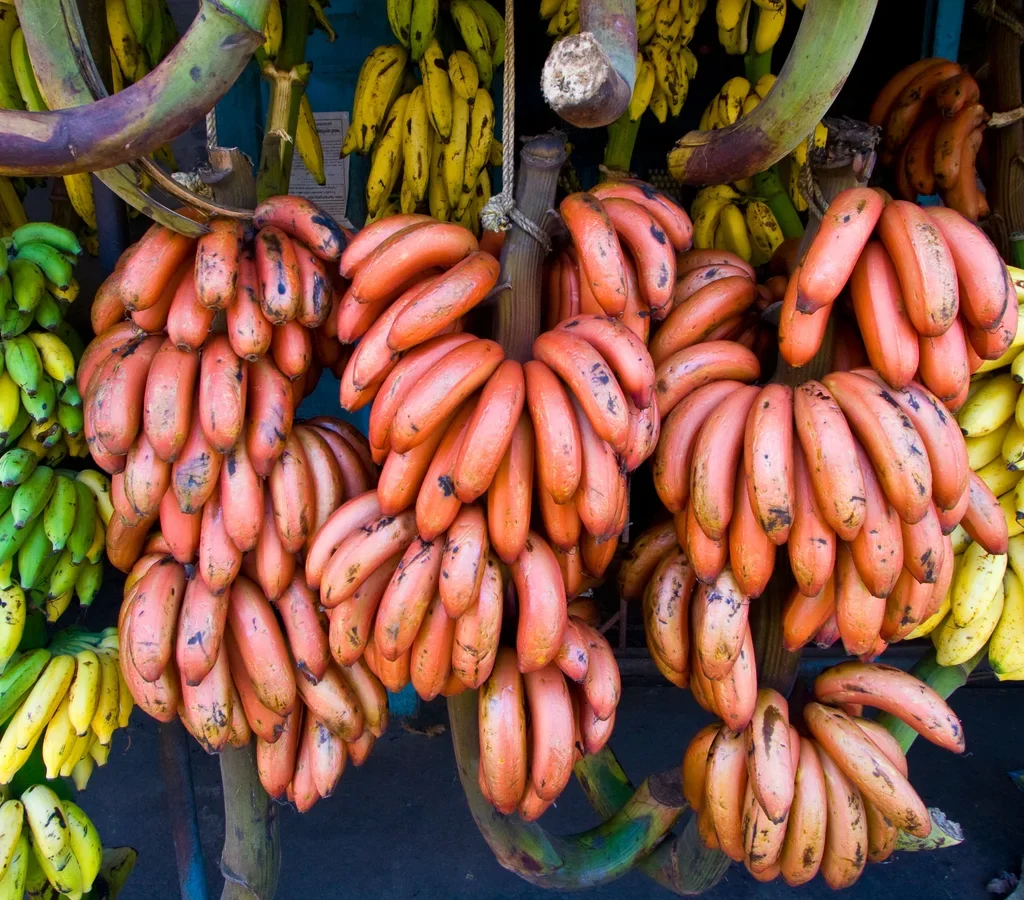
Red bananas (Musa acuminata or Musa velutina, depending on the variety) are a tropical fruit species native to Southeast Asia but now cultivated across Africa, India, and Central America. The plants grow 6–8 feet tall and produce smaller, thicker fruits than yellow bananas.
What makes red bananas unique is not only their color but also their flavor and nutrition. They are rich in beta-carotene, vitamin C, potassium, and antioxidants. Their soft, creamy flesh has a distinct sweet taste, often described as a blend between a banana and a berry.
Growing them at home or on a small farm is rewarding—they thrive in warm climates, add ornamental value with their reddish stems and fruits, and fetch a high price in markets due to their rarity.
2. Choosing the Right Variety for Cultivation
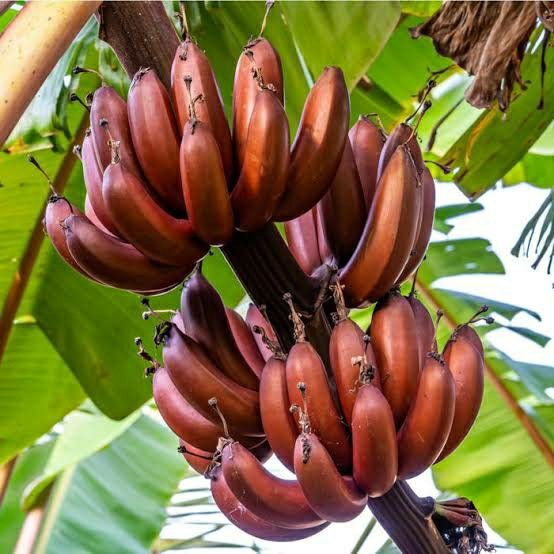
There are several red banana varieties grown worldwide, including:
- Red Dacca (Red Cavendish): Commonly grown in India and Southeast Asia; has a reddish-purple peel and sweet flavor.
- Red Cuban Banana: Grows well in humid conditions; has a rich taste and is ideal for small gardens.
- Musa velutina (Pink Banana): A small ornamental type with fuzzy pink fruit, perfect for decorative gardens.
For home cultivation or small-scale farming, Red Dacca is the best choice—it’s both visually appealing and productive.
3. Ideal Climate and Growing Conditions
Red bananas prefer a warm, humid tropical climate with temperatures between 20°C and 30°C (68°F to 86°F). They require at least 10–12 months of frost-free weather to mature properly.
They grow best in loamy, well-drained soil that is rich in organic matter. Avoid waterlogged areas, as excess moisture can cause root rot. If your area is dry, regular irrigation and mulching are essential.
Optimal growing conditions include:
- Rainfall: 1000–2500 mm annually.
- Sunlight: At least 6 hours of direct sunlight daily.
- Soil pH: Between 5.5 and 7.0.
- Elevation: 500–1500 meters above sea level (ideal for tropical and subtropical zones).
4. Propagation: Choosing Healthy Suckers or Tissue Culture Plants
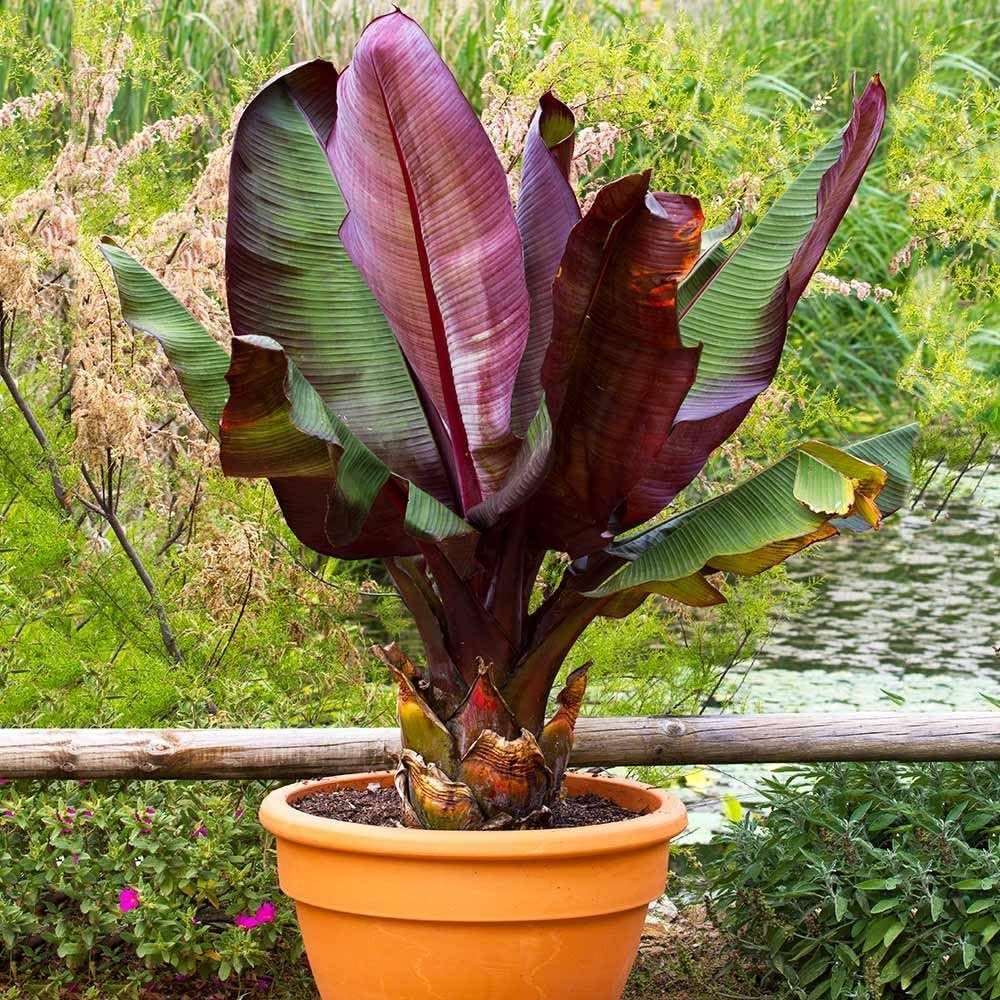
Red bananas are typically propagated through suckers (offshoots) or tissue culture plants.
- Suckers: Choose sword suckers (1–2 feet tall) with thick bases and narrow leaves. Avoid water suckers as they are weak and unproductive.
- Tissue culture plants: These are disease-free, uniform, and ideal for large-scale cultivation.
Before planting, trim off old roots and outer leaf sheaths, then treat the suckers in a fungicide or boiling water for a few seconds to kill pests and nematodes.
5. Land Preparation and Planting Method
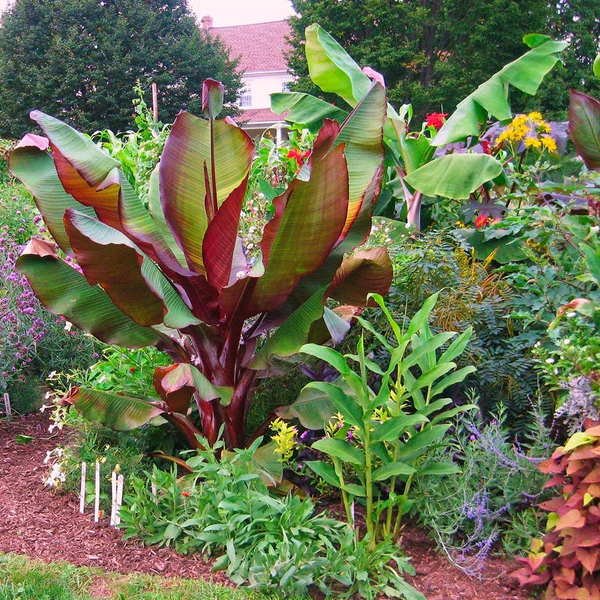
Prepare the field or garden area at least one month before planting:
- Clear weeds, stones, and debris.
- Dig pits measuring 45 cm x 45 cm x 45 cm.
- Mix the topsoil with organic manure or compost (10–15 kg per pit).
- Space the pits 1.8–2.1 meters apart to allow proper airflow and sunlight penetration.
When planting:
- Place the sucker or plantlet upright in the pit.
- Cover the corm with soil, leaving about 2–3 cm of pseudostem above ground level.
- Water immediately after planting.
Tip: If growing in pots, use large containers (at least 25–30 liters) with a mix of loamy soil, compost, and sand for good drainage.
6. Irrigation and Water Management
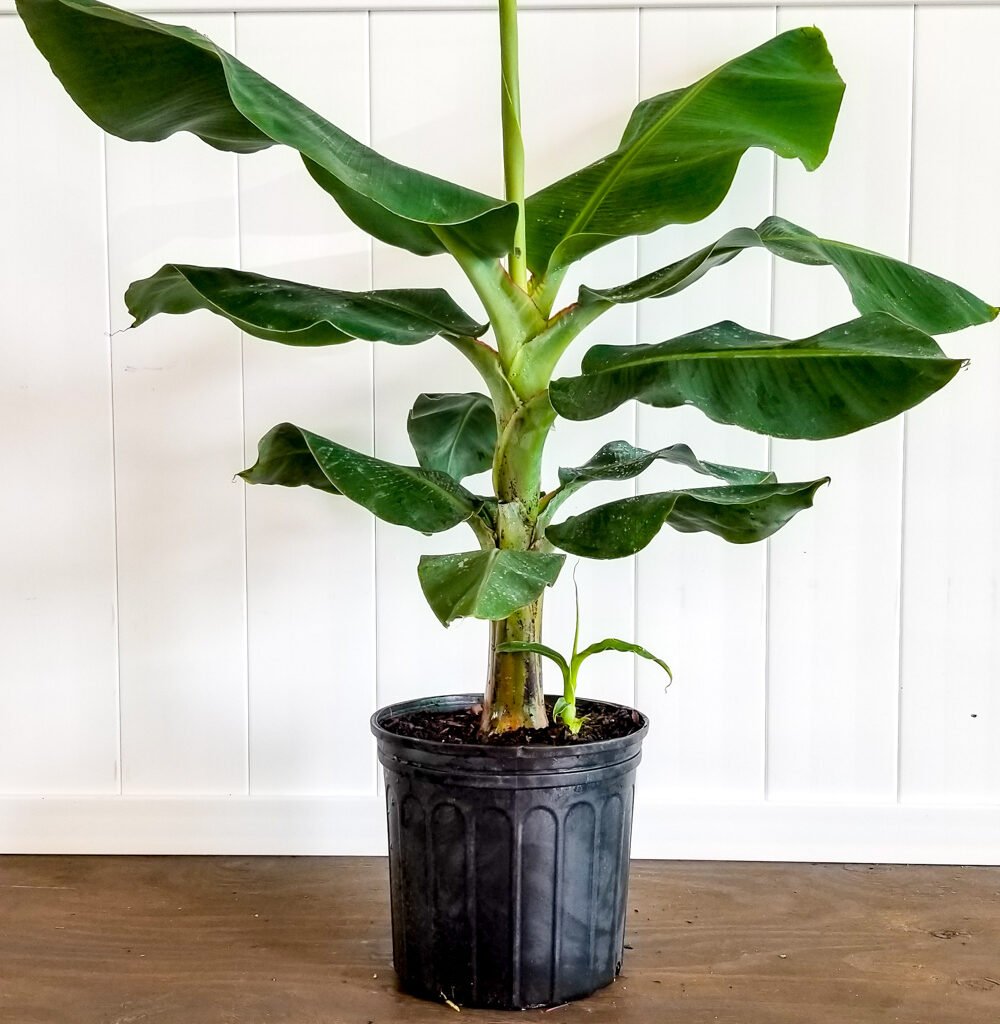
Red banana plants require consistent moisture for optimal growth.
- First 3 months: Water every 2–3 days to help roots establish.
- After establishment: Water once or twice a week depending on rainfall and temperature.
- During fruiting: Maintain regular watering to ensure fruit quality and prevent splitting.
Avoid overwatering—standing water leads to fungal infections. Drip irrigation or basin irrigation is ideal for conserving water and maintaining even soil moisture.
7. Fertilization and Nutrient Management
Red bananas are heavy feeders. They require balanced nutrition for healthy foliage and large fruit bunches.
At planting:
- Add 10–15 kg of organic manure or compost per plant.
After planting:
- At 3 months: Apply NPK (10:10:10 or 15:15:15) at 200 g per plant.
- At 6 months: Apply potassium-rich fertilizer (e.g., 200 g MOP or 17:17:17 NPK) to promote fruiting.
- At 9 months: Apply another round of compost or banana peel tea for natural potassium.
You can also use liquid organic fertilizers, such as compost tea or fish emulsion, for regular feeding every 2–3 weeks during the growth period.
8. Weed, Pest, and Disease Management
Weeds compete with banana plants for nutrients and water. Control them by:
- Regular manual weeding.
- Applying organic mulch (banana leaves, dry grass, or sawdust).
- Using cover crops like cowpea to suppress weed growth.
Common pests and their management:
- Banana Weevil: Boreholes in pseudostems—control by using clean planting material and pheromone traps.
- Aphids: Transmit viral diseases—control using neem oil spray.
- Nematodes: Attack roots—prevent with hot water treatment of suckers or organic soil amendments.
Common diseases:
- Panama wilt (Fusarium wilt): Caused by fungus in soil—avoid planting in infected areas, use resistant varieties, and rotate crops.
- Sigatoka leaf spot: Appears as dark streaks on leaves—control with regular pruning of old leaves and use of organic fungicides like copper oxychloride.
Maintaining proper field sanitation, avoiding overcrowding, and ensuring good drainage are key to pest and disease control.
9. Mulching and Soil Conservation
Mulching is one of the most important practices for red banana cultivation. It:
- Conserves soil moisture.
- Suppresses weeds.
- Adds organic matter to the soil.
- Keeps soil temperature stable.
Use banana leaves, straw, or compost as mulch around the base, leaving a small space around the pseudostem to prevent rot.
Mulching also reduces fertilizer leaching and encourages microbial activity in the soil, leading to healthier root systems.
10. Flowering and Fruiting Stages
Red banana plants begin to flower around 8–10 months after planting. The inflorescence emerges from the top of the pseudostem, followed by bunch formation.
Once flowering begins:
- Maintain regular irrigation.
- Support the plant with bamboo stakes to prevent toppling due to heavy bunches.
- Remove dry or damaged leaves to allow sunlight to reach the fruits.
The fruits mature in 11–12 months, turning from deep green to a reddish-purple hue as they ripen.
11. Harvesting and Post-Harvest Handling
Harvest when the fruits are fully developed but still firm and greenish-red. Overripe fruits can split easily during handling.
To harvest:
- Cut the bunch carefully with a sharp knife.
- Handle gently to avoid bruising.
- Store in a cool, dry place for ripening.
Fruits ripen within 4–7 days at room temperature. For commercial purposes, bunches can be ripened using ethylene in ripening chambers to maintain uniform color and taste.
Post-harvest uses:
- Fresh consumption (sweet and creamy texture).
- Processed into banana chips, puree, or smoothies.
- Dried or powdered for health products and baking.
12. Growing Red Bananas in Pots (Home Gardening)
If you don’t have farmland, red bananas grow beautifully in large pots or containers.
- Use at least a 25–30 liter container with drainage holes.
- Fill with a mix of loamy soil, compost, and coco peat.
- Keep the pot in full sun.
- Water regularly and feed with organic fertilizer every 2 weeks.
Container-grown plants may produce smaller bunches but make an excellent ornamental addition to balconies and patios.
13. Profit Potential of Red Banana Farming
Red bananas have a high market value due to their rarity and health appeal. In local and export markets, they can fetch 2–3 times more than yellow bananas. With proper care and management, a well-maintained field can yield 30–40 tons per hectare annually.
Intercropping red bananas with legumes or vegetables during early stages can also generate extra income and improve soil fertility.
14. Tips for Success in Red Banana Cultivation
- Always use disease-free, vigorous suckers or tissue-culture plants.
- Maintain regular irrigation and mulching to preserve soil moisture.
- Prune old leaves and desucker to allow new growth.
- Apply organic compost and potash for sweeter fruits.
- Protect from strong winds using windbreaks or bamboo supports.
- Harvest at the right maturity stage for better flavor and shelf life.
Conclusion
Red banana farming is both a rewarding and profitable venture for home gardeners and commercial growers alike. With their striking color, sweet taste, and nutritional richness, red bananas stand out as a premium fruit that combines beauty and health.
By following proper planting, fertilization, pest control, and irrigation practices, you can cultivate thriving red banana plants that produce abundant, high-quality fruit year after year. Whether grown in your backyard or on a large farm, red bananas bring not only income but also joy, nutrition, and color to your garden.
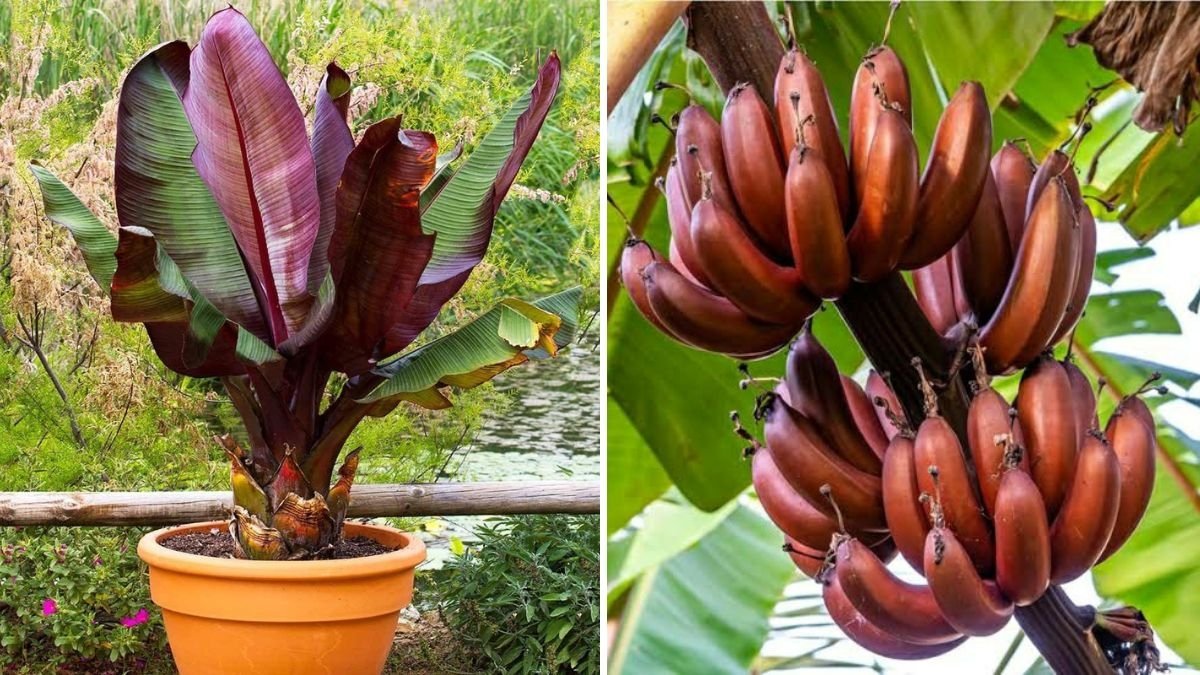
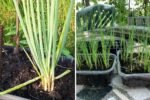

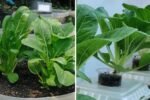
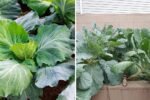

Leave A Comment